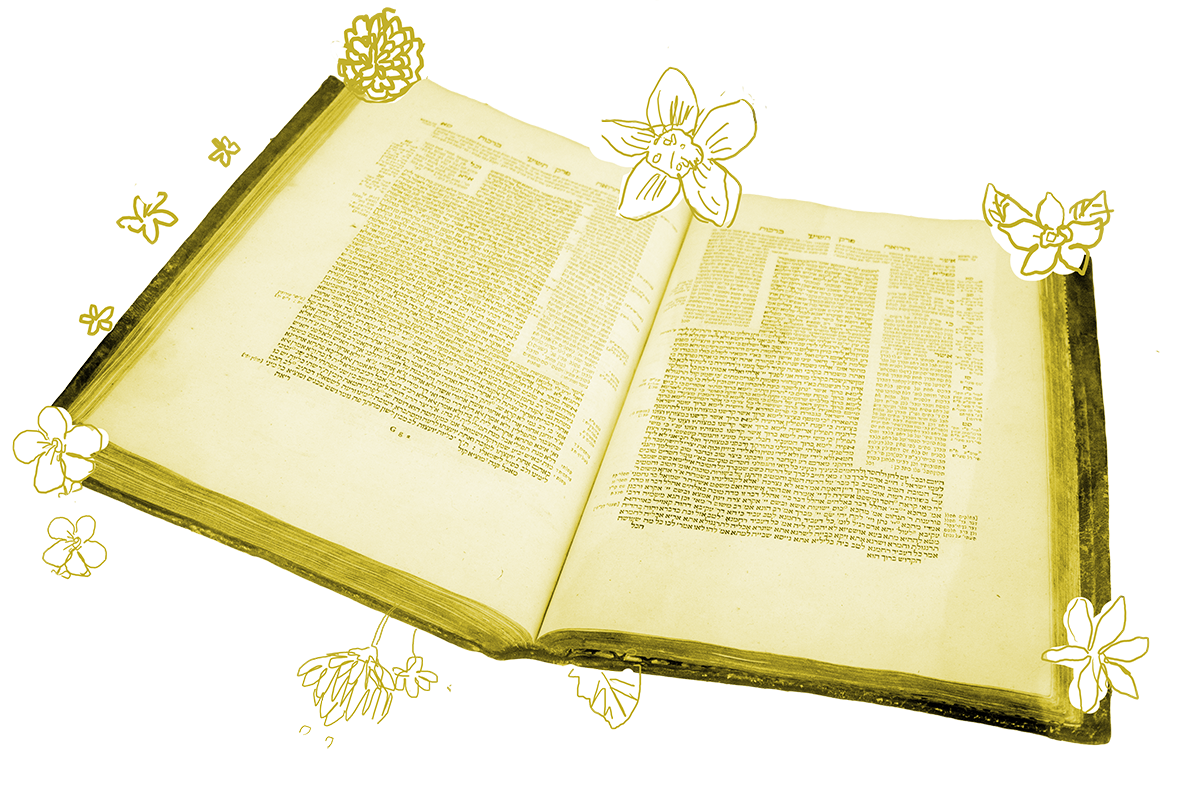While “The Break-Up” might not be excellent cinema, there is one scene that I often return to in my head when I think about intention and action. Jennifer Aniston is angrily cleaning up after a dinner party while Vince Vaughn is playing video games in the other room. She asks for his help. He suggests waiting a bit — wanting to relax after a long day. They fight, it escalates, and he finally agrees to do the dishes — at which point she (famously, since it exists in GIF form now) tells him that it is not that she wants him to help with the dishes, she wants him to want to help with the dishes.
The substance of an argument in today’s Gemara is quite different from doing dishes, but the underlying question is similar: to what extent does intention matter?
Today’s page contains many examples of objects that are muktzeh (may not be touched or moved because they are usually used for Shabbat-prohibited labors) but are incorporated into Shabbat-permitted vessels in ways that render them permissible to move. For example, although gathering branches is forbidden on Shabbat, if a branch is tied to a pitcher it is considered part of that pitcher and the whole apparatus may be moved on Shabbat.
A more complicated example is that of a stone (muktzeh) resting inside a hollowed-out gourd (not muktzeh) that is used for collecting water. The stone functions as part of the device because it weights the gourd so it can be filled with water (otherwise, the gourd would float atop the well water’s surface and be difficult to fill). But unlike the branch and the pitcher, the stone is not necessarily attached to the gourd (it might be simply resting in the bottom of the gourd). Our mishnah states that as long as the stone does not fall out of the gourd when it is being used to draw water, the stone is considered part of the gourd and therefore the whole apparatus may be moved on Shabbat.
With your help, My Jewish Learning can provide endless opportunities for learning, connection and discovery.
The discussion of under which circumstances this stone may be moved on Shabbat gets even more dizzyingly complicated in the Gemara, which eventually articulates the following summation of the debate:
With regard to what do they disagree?
One Sage, Rabba, holds that we require an action to change the status of a stone or another set-aside object into a vessel.
And one Sage, Rav Yosef, holds that we do not require an action.
What does it take, the rabbis are asking, to make something no longer muktzeh? Do I need to do something to it, or is wanting to do something enough? The answer comes in the form of a story:
When Rav Dimi came (from the land of Israel to Babylonia) he said that Rabbi Hanina said (though some say that it was Rabbi Zeira who said that Rabbi Hanina said it): Once Rabbi Yehuda HaNasi went to one place and found a course of building stones, and he said to his students: Go out and think that you are designating these stones for Shabbat so that we may sit on them tomorrow. And Rabbi Yehuda HaNasi did not require them to perform an action with those stones.
So, according to this account, mere thoughtful intention is enough to change an object from muktzeh to non-muktzeh.
Or is it? The Gemara knows another version of the story which it relates next:
Rabbi Yohanan said: That is not what happened. Rabbi Yehuda HaNasi required them to perform an action to designate the stones.
What action did he say to them to perform? Rabbi Ami said that Rabbi Yehuda HaNasi said to them: Go out and arrange the stones. Rabbi Asi said that he said to them: Go out and rub the mortar off of them.
Rabbi Yohanan argues that in fact Rabbi Yehudah HaNasi did require his students to perform an action on the stones that would designate them for Shabbat and render them permissible seating. Naturally, the Gemara even has two different accounts of what that action was! (And, if you read further in the page, you see that the rabbis also disagree about whether it was even stones that Rabbi Yehudah HaNasi planned to use as seating for his lecture.)
Action or no action? The question, as regards the stone in the gourd, remains unresolved. But one thing we do learn today is that whether in thought or in action, forethought and planning are expected. Once Shabbat begins, these stories remind us, it is too late to change an object’s status. You have to plan to use the stones. You have to plan to do the dishes.
Read all of Shabbat 125 on Sefaria.
This piece originally appeared in a My Jewish Learning Daf Yomi email newsletter sent on July 9, 2020. If you are interested in receiving the newsletter, sign up here.



